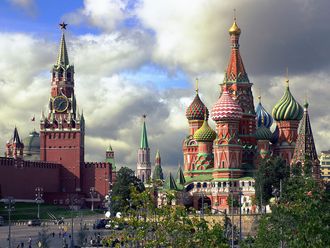
Dubai: Leading credit rating agencies such Moody’s, Standard & Poor’s (S&P) and the Fitch Ratings expect to see a significant improvement in the finances of the GCC governments, thanks to the rising oil prices, recent fiscal reforms and improving economies.
GCC sovereigns’ government finances and external accounts remain heavily correlated to global oil demand and prices.
“With oil prices significantly higher – even exceeding pre-pandemic levels – and oil production gradually normalising, fiscal positions will strengthen and debt will decline for most governments in the region,” said Christian Fang, a Vice President at Moody’s Investors Service.
According to S&P, higher oil prices, while supportive for GCC government finances, recent fiscal reforms too are expected to boost government revenues. While Oman introduced value added tax Saudi Arabia tripled it to 15 per cent and Bahrain will double its VAT rate to 10 per cent starting January 2022.
Reforms impact
Fiscal reforms across the GCC came in the form of both spending cuts and measure to augment revenue.
“Many Gulf States have shown spending restraint in response to the double external shocks of 2020 ... (and some) have also made inroads to diversifying their government revenue streams away from hydrocarbons,” said S&P.
Moody’s expects GCC’s fiscal positions will continue to improve in 2022. Their baseline projections assume that oil prices will average $65-$70/barrel in 2022, broadly in line with the average price in 2021 and around 60 per cent higher than the average in 2020.
Fitch agrees. Resurgent oil prices are causing a marked improvement in GCC fiscal and external balances in 2021, alongside reform momentum that has taken hold to varying degrees since 2014 in response to oil price volatility.
Fitch’s analysis estimates that GCC budgets, except in Bahrain, would move into surplus if oil prices were to average $75 a barrel in 2022. At the current price of $85/bbl, Bahrain’s budget would also be close to balance.
Pick-up in economic growth is also support fiscal positions. Moody’s expect higher hydrocarbon production to provide a fillip to the ongoing economic rebound in GCC countries in 2022, with growth rates set to accelerate. While the oil sector is forecast to grow by 7.4 per cent in 2022, after a 0.5 per cent contraction in 2021, the non-oil sector is expected to grow by 3.6 per cent in 2022 after expanding by 4 per cent in 2021.
Relatively high vaccination rates in the region and opening of borders are likely to further boost the non-oil economic sectors such as travel, tourism and hospitality sectors.
According to Moody’s, stronger fiscal positions and continued increase in nominal GDP – initially led by higher oil prices in 2021 and largely driven by stronger output in 2022 – will support a decline in government debt burdens from end-of-2020 levels in Oman, Qatar, Saudi Arabia and the UAE. However, debt burdens will remain higher than pre-pandemic.
“Fiscal buffers remain sizeable and a source of credit support for many GCC sovereigns. We estimate that fiscal buffers in the region – which we define as the liquid, foreign currency-denominated portion of SWF assets – remain large particularly in Kuwait, the UAE and Qatar, and sufficient to cover all of these governments’ debt,” said Christian Fang, a Vice President at Moody’s Investors Service.








